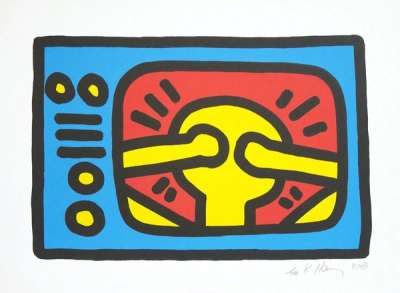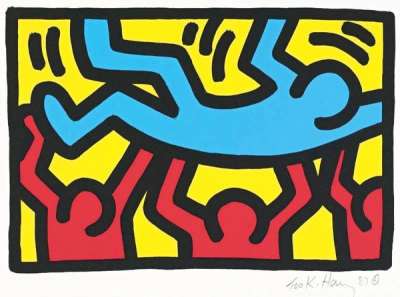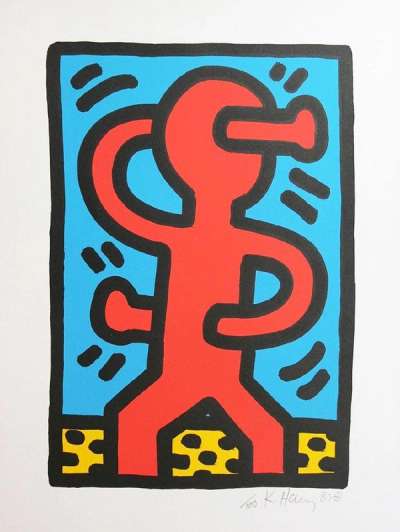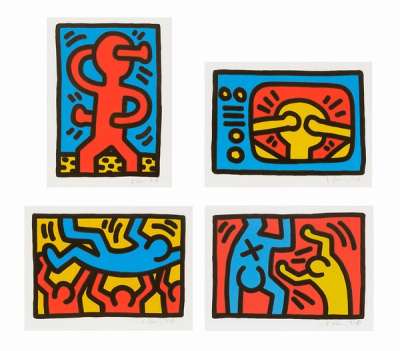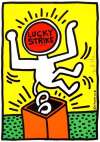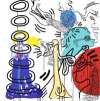Untitled
1987
Keith Haring's Untitled 1987 comprises a series of prints that exemplify Haring's signature style ‘modern hieroglyphics’. The four prints are executed in the three primary colours: red, yellow, and blue with graphic black outlines. This collection is a prime example of Haring's ability to create imagery that is both playful and profound, with themes that speak to a global audience.
Keith Haring Untitled 1987 For sale
Untitled 1987 Market value
Auction Results
| Artwork | Auction Date | Auction House | Return to Seller | Hammer Price | Buyer Paid |
|---|---|---|---|---|---|
Untitled 1987 | 26 Oct 2025 | SBI Art Auction | £11,900 | £14,000 | £16,000 |
 Untitled 1987 Keith Haring Signed Print | 23 Oct 2025 | Bukowskis, Stockholm | £15,300 | £18,000 | £22,000 |
 Untitled 1987 Keith Haring Signed Print | 5 Jun 2025 | Phillips New York | £8,075 | £9,500 | £13,000 |
 Untitled 1987 Keith Haring Signed Print | 20 Apr 2023 | Christie's New York | £11,900 | £14,000 | £19,000 |
 Untitled 1987 (complete set) Keith Haring Signed Print | 23 Oct 2018 | Bonhams Los Angeles | £25,500 | £30,000 | £40,000 |
Sell Your Art
with Us
with Us
Join Our Network of Collectors. Buy, Sell and Track Demand
Meaning & Analysis
Reminiscent of his iconic Pop Shop series, Keith Haring's Untitled 1987 comprises of four prints, each depicting various figures and symbols that are familiar to Haring's work. The prints are all screen prints on paper, with a vibrant and saturated color palette. They vary in size, with some measuring H 30cm x W 21cm and others measuring H 43cm x W 52cm.
One of the most prominent themes in this particular collection is Haring's interest in figuration and body language. In this, the works have a universal approach and can be interpreted across borders of language, race, class, and sexuality. The figures in these prints are depicted in various poses, with some examples jumping, dancing, or expressively interacting with one another. Haring's use of bold and simple lines creates a sense of movement and dynamism, giving the figures a sense of energy and vitality.
Executed in simple primary colours, and depicting naively rendered figures, Untitled 1987 is tantamount to Haring's entire oeuvre. Through his use of bold and playful imagery, Haring was able to convey complex ideas and emotions in a way that was accessible to a broad audience. Haring designed his figures and symbols to be understood by all, regardless of their age and identity.
This collection of screenprints from 1987 is a testament to Haring's enduring legacy as Pop Artist who used his work to comment on the socio-political issues of his time. As such, these works epitomise a crucial moment in the history of art, culture, and society.
